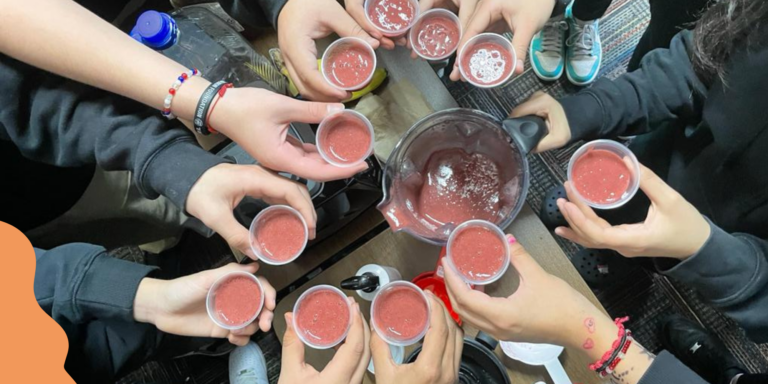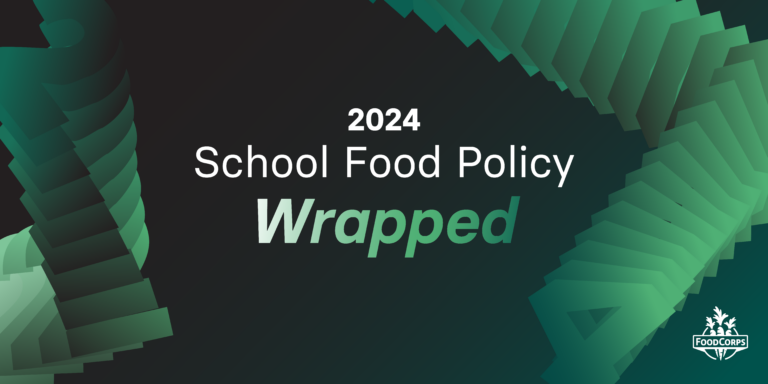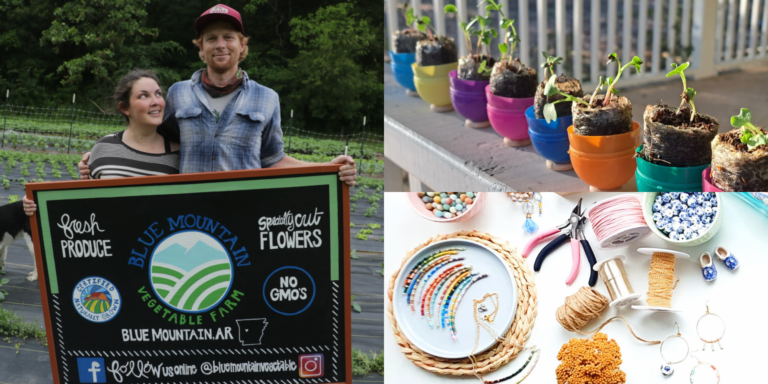Why School Food is a Justice Issue
Unpacking the role of school food in supporting every kid’s power.
Unpacking the role of school food in supporting every kid’s power.

School food is a matter of justice.
Food justice is key in creating a world free from oppression, where all people have the freedom, agency, and power to live our lives as we choose. And schools—among the earliest places where kids learn about food, practice building community, and often get most of their daily nutrition—are critical in shaping this world for our kids.
Kids can’t grow and thrive without access to nourishing food. And schools play a major role in determining what children eat, what they learn about food and bodies, and how supported they feel honoring their food traditions and customs. There’s no justice without food justice, and that includes food in schools.
Let’s break it down further.
Like virtually every institution in America, the school food system has been impacted by systemic racism since its creation.
In the early 1900s, school meals were used as a tool for assimilating previously enslaved Black, Indigenous, and migrating children to white American culture and foodways. Jim Crow-era policies and practices like redlining confined Black families to under-resourced, less wealthy neighborhoods. In these neighborhoods, property taxes were too low to properly fund public schools, let alone school kitchens.
Communities of color, as well as poor rural communities, are habitually left out of federal policies that would bolster local infrastructure, farms, and economies. This is just a fraction of the deep-seated impact of racism in our broader food system, which affects everything from access to fresh produce to fair wages and labor practices for farmworkers.
Today, the regions most impacted by these long-standing inequities—namely rural and urban communities—still have some of the highest rates of child hunger. Our culture still punishes children who come from low-income families, whether by shaming them for school lunch debt or upholding stigma and shame about receiving free school meals.
And kids feel the effects of food insecurity across all aspects of their lives: they risk higher rates of chronic illness, experience slower progress at school, and face increases in anxiety and depression.
Too often, critics blame these disparities on personal choices. In fact, they’re the result of generations of social and economic inequities, upheld by systemic racism and classism. When we view school food as a justice issue, we create another avenue for dismantling these unjust systems, ending oppression and exploitation, and building a path to liberation.
Food is at the heart of culture, and it looks, tastes, and feels different depending on where you are in the country or in the world.
Nearly every holiday, celebration, milestone moment, or cultural observance is paired with a meaningful food tradition. Sharing culturally significant, familiar foods is a powerful way to see your culture represented and celebrated, and it’s an opportunity to connect with peers over the traditions that matter to us.
When meals served in schools are culturally representative of the children who eat them—and developed in partnership with the communities who steward them—the food is not just nourishing, but comforting.
Culturally responsive school meals help to protect students against being othered or excluded because of their backgrounds. And when schools serve foods that are familiar to students and meaningful in their cultures, those students know and feel that they belong.
FoodCorps advocates for school meals that reflect the cultures and local contexts of the communities where they are served. We see culturally responsive school meals as a powerful tool for justice: one that says there’s room to celebrate students of all races, religions, and cultural backgrounds at the lunch table.
There’s a rich history of food sovereignty as a form of justice.
Whether it’s the Black Panthers serving free breakfasts to thousands of students and inspiring our national school breakfast program, or the freedom of growing your own food in your backyard, or the power to make informed decisions about where you source your groceries—the ability to take charge of our own health, well-being, and joy through food is an important one.
But food sovereignty is about more than choosing what’s on your plate. It connects us to our ancestors, who may have had much closer relationships with cultivating land and water than we do today. It invites us to learn about cultural food traditions we may practice without knowing their full history. It brings us into our bodies, encouraging us to notice what nourishes us and makes us feel grounded and whole.
Food sovereignty is a meaningful way we can learn to exercise our power, build belonging in our communities, and honor where we came from. In order for us to realize a truly just world, we must ensure that each one of us has the agency to choose foods and traditions that serve our health and wellness. Only we can decide what that looks like—and for our children, that journey begins in schools.
Food justice sees nutritious, nourishing food as a human right—one that communities of color have long been denied, and one that’s critical in our ability to live out our brightest futures. There is no justice unless we each have the power to nourish ourselves, our families, and our communities—the kind of autonomy that’s key to dismantling racism and building a more just world.
We are hopeful for a world in which schools share this value, and equip students to lead their own food journeys—through their childhoods and for the rest of their lives.
For more stories about food justice for kids, subscribe to FoodCorps emails.
Related read: How Racism Shows Up in the Food System — And What We Can Do About It | “Access to healthy food is also often limited by race, as low-income Black and Brown neighborhoods are more likely to be located far away from affordable, healthy food options. The term ‘food apartheid’ is more accurate than terminology like ‘food desert’ because the neighborhoods in question are not ‘deserted,’ but rich with community life. Furthermore, food-scarce areas are not naturally occurring like deserts, but intentionally designed by those with more power and resources.”

5 Blender-Friendly Recipes For Sauces and More

Our 2024 Child Nutrition Policy Year in Review

9 Thoughtful Holiday Gifts Made by FoodCorps Alumni